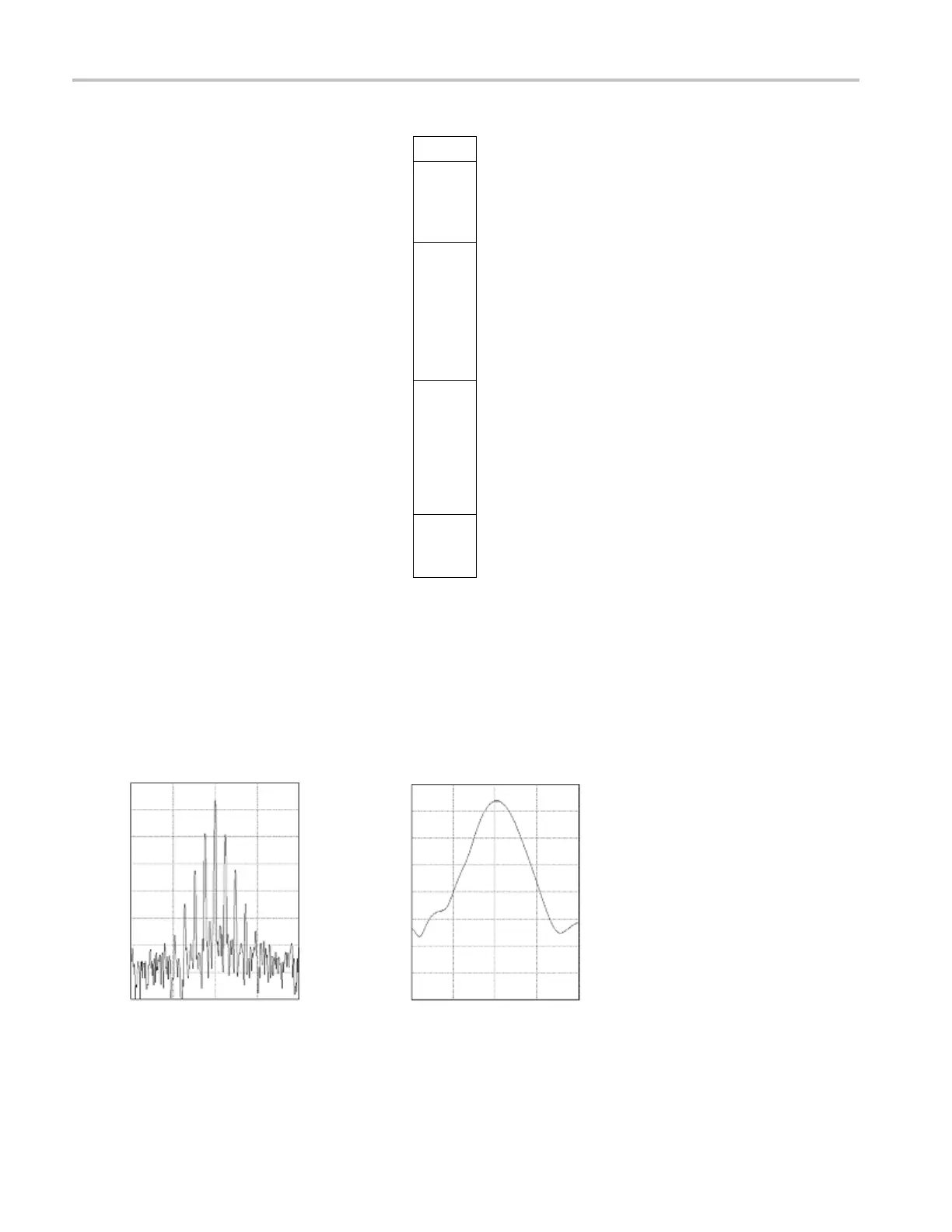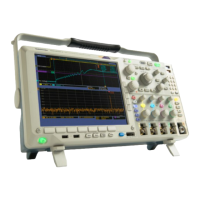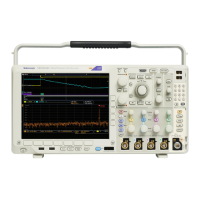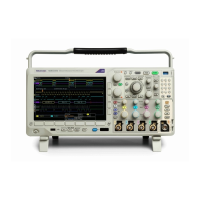Acquire the Sign
al
Amplitude
2. Push Ref Level and rotate multipurpose
knob a to set th
e approximate maximum
power level, as shown by the baseline
indicator at the top of the frequency graticule.
Ref Level
(a)
-25.0 dBm
3. Push Vertica
l and rotate multipurpose knob
a to adjust the vertical position. You will
move the baseline indicator up or down.
This is usef
ul if you w ant to move signals
onto the visible display.
Rotate multipurpose knob b to adjust the
vertical s
cale.
Vertical
420 mdiv
20.0 dB/div
4. Push Vertical Units and rotate multipurpose
knob a to define the vertical units of measure
for the fr
equency domain. Choices are:
dBm, dBμW, dBmV, dBμV, dBmA, and
dBμA. This is useful if your application
requires
a different unit of measurement
than that being currently displayed.
Vertical
Units
dBm
5. Push Auto Level to direct the oscilloscope
to autom
atically calculate and set the
reference level for you.
Auto Level
Resolution Bandwidth
The resolution bandwidth (RBW) determines the level to which the oscilloscope can resolve individual frequencies in
the frequency domain. For example, if the test signal contains two carriers separated by 1 kHz, you will not be able to
discriminate between them unless the RBW is less than 1 kHz.
The views below both show the s ame signal. The difference between them is their RBW.
Lower (narrower) RBWs take long er to process,
but have finer frequency resolutio n and a lower
noise floor.
Higher (wider ) RBWs take less time to process, but have less frequency resolution
and a higher noise floor.
78 MDO4000 Series Oscilloscopes User Manual

